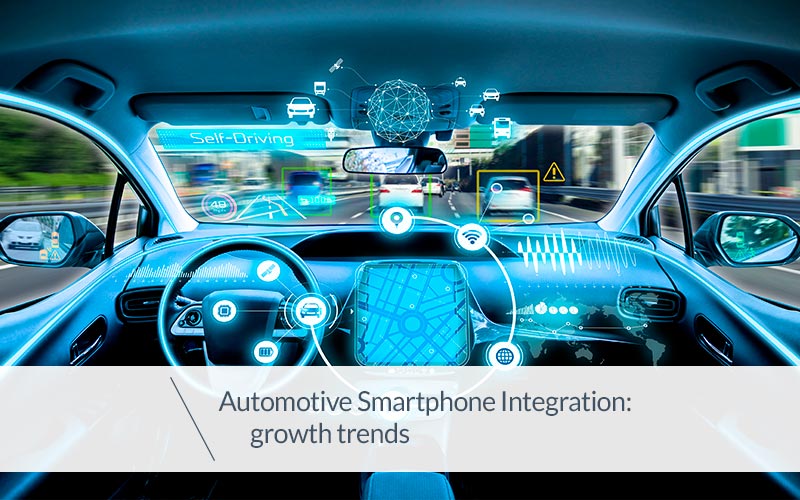
The automotive industry is strongly tied to new technology, as we already explained in a previous article where we listed the main new 2019 technologies.
The role is mostly dominated by smartphones. These small devices are constantly present in our lives, and are used for a multitude of reasons, and not just fun ones.
Integration between smartphones and the automotive industry is a hugely interesting process. It includes a number of key players, each of which sees opportunities for growth and development.
Automotive sector vertical market opportunities
Telecommunications workers, smartphone producers, electrical appliance manufacturers, insurance companies, software houses; each of these has a very precise role in the process known as the “automotive vertical market”.
The vertical market in the automotive sector includes many differentiated production companies. They range from the traditional (tyres, accessories, sales, petrol pumps etc…) to very different sectors, which are still hugely involved in the process, such as those mentioned above.
However, each of the aforementioned industries has a differing outlook, which they view from an individual standpoint:
- For a telephone operator, the challenge lies in supplying a stable and widespread network service. This is why the whole world is looking for a worldwide 5G network, which will be essential for IoT growth and lots more besides.
- A smartphone producer needs to create hardware and systems which permit seamless vehicle integration, independent of the make or model
- For software houses, there is an opportunity to develop apps and new operating systems which may include vehicle integration.
These are just examples, but the automotive/smartphone integration process is so wide that it really does involve a whole range of aspects.
Integration of smartphones and onboard devices
It’s not enough to simply develop apps and operating systems that are connected to the vehicle. It’s important that each of these interacts intelligently with the electronic devices on board, including onboard computers, sat navs, stereos and other devices in the IVI category (In-Vehicle-Infotainment).
Why is this so important?
For our safety! We can’t drive a car whilst constantly using our smartphones to activate each and every function. That is way too distracting.
Unfortunately, most drivers are distracted, often due to smartphone usage, causing many accidents and near-accidents.
How can we improve these figures?
Currently, many smartphone applications which permit integration with the vehicle cannot be used safely whilst driving because they need focus, for us to use our hands to make selections and to look at the display.
The challenge for software houses is therefore to work on the user interface.
For example?
Apps could be used entirely via vocal commands, without drivers having to be distracted.
However, developing this kind of app is costly in terms of labour hours and human and economic resources. Thinking that an outside company would be happy to accept these conditions is really overly optimistic.
Furthermore, it’s not always possible to create a system that requires no manual intervention.
The solution could lie in embedding apps within the mainframe of the vehicle itself.
However, to do this, the automotive manufacturers would have to adapt current operating systems (for example Android) or develop new ones able to communicate with existing smartphones, which as we will see, have a much shorter life-expectancy than that of a vehicle.
Connected car: the difference between a car and an electronic consumer device
The very first examples of connected vehicles have been on the market for a while, but before all this becomes the norm, a few years will have to go by.
Why?
The automobile industry lags the consumer electronics industry, both regards production and the product life cycle of the end product.
In essence, a three-year-old car is considered as being practically new, yet a similar smartphone would be considered obsolete and at least in some cases, would not work anymore.
This means that smartphone/vehicle integration - something that has already happened and is growing - to being where incorporated SIM cards in vehicles is the norm will take a little time, and not only because of a “sluggish” automotive sector.
Basically, without the development of a wide bandwidth network right across the territory, it’s hard to imagine the next step.
Conclusions
Undoubtedly all future vehicles will be connected and smartphone/vehicle integration will be paramount for this.
It’s a revolution that is actually already happening and which will come up against numerous challenges.
Many manufacturers are investing in R&D resources in order to take this integration to the next level.



